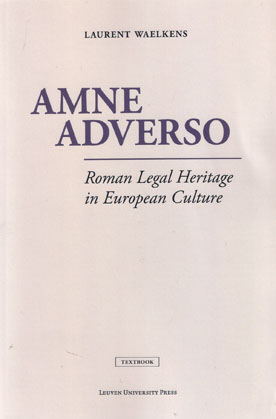
Throughout its history, Europe has been influenced by Roman culture, a culture with a strong sense of society and highly legal-minded. Hence, Roman law is of major importance in European thinking. It was the first subject to be taught at university and it remains tightly interwoven with all layers of European civilisation.
This book provides an introduction to the history of Roman law and its institutions, as they developed from Antiquity until the nineteenth century. Concepts such as fundamental rights and freedoms, lawsuits, family law, rights in rem, and obligations have their origins in classical Antiquity and were developed further throughout European history.
The historical processing of our Roman legal heritage is treated from the perspective of comparative legal history. The book is written for undergraduate law students, but is also relevant for scholars from other disciplines.